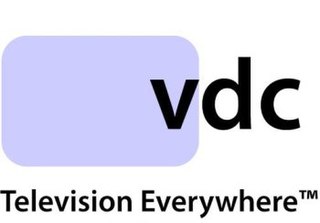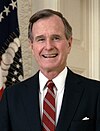Communications in the United States include extensive industries and distribution networks in print and telecommunication. The primary telecom regulator of communications in the United States is the Federal Communications Commission.

The Federal Communications Commission (FCC) is an independent agency of the United States federal government that regulates communications by radio, television, wire, satellite, and cable across the United States. The FCC maintains jurisdiction over the areas of broadband access, fair competition, radio frequency use, media responsibility, public safety, and homeland security.

The Telecommunications Act of 1996 is a United States federal law enacted by the 104th United States Congress on January 3, 1996, and signed into law on February 8, 1996, by President Bill Clinton. It primarily amended Chapter 5 of Title 47 of the United States Code.
Public-access television is traditionally a form of non-commercial mass media where the general public can create content television programming which is narrowcast through cable television specialty channels. Public-access television was created in the United States between 1969 and 1971 by the Federal Communications Commission (FCC), under Chairman Dean Burch, based on pioneering work and advocacy of George Stoney, Red Burns, and Sidney Dean.
In cable television, governments apply a must-carry regulation stating that locally licensed television stations must be carried on a cable provider's system.
Superstation is a term in North American broadcasting that has several meanings. Commonly, a "superstation" is a form of distant signal, a broadcast television signal—usually a commercially licensed station—that is retransmitted via communications satellite or microwave relay to multichannel television providers over a broad area beyond its primary terrestrial signal range.

Mediacom Communications Corporation is the United States' fifth largest cable television provider based on the number of video subscribers, and among the leading cable operators focused on serving smaller cities and towns. The company has a significant concentration of customers in the Midwest and Southeast, and is the largest broadband provider in Iowa. Founded in 1995 by Rocco B. Commisso, the current owner of the New York Cosmos and ACF Fiorentina. Mediacom is headquartered in New York and incorporated in Delaware, United States. Formerly a publicly traded firm, it went private in a $600 million transaction in March 2011 and is owned solely by Commisso as of 2011.

The Cable Communications Policy Act of 1984 was an act of Congress passed on October 30, 1984 to promote competition and deregulate the cable television industry. The act established a national policy for the regulation of cable television communications by federal, state, and local authorities. Conservative Senator Barry Goldwater of Arizona wrote and supported the act, which amended the Communications Act of 1934 with the insertion of "Title VI—Cable Communications". After more than three years of debate, six provisions were enacted to represent the intricate compromise between cable operators and municipalities.
Syndication exclusivity is a federal law implemented by the Federal Communications Commission (FCC) in the United States that is designed to protect a local television station's rights to syndicated television programs by granting exclusive broadcast rights to the station for that program in their local market, usually defined by a station's Nielsen Designated Market Area.
Cable television first became available in the United States in 1948. By 1989, 53 million U.S. households received cable television subscriptions, with 60 percent of all U.S. households doing so in 1992. Most cable viewers in the U.S. reside in the suburbs and tend to be middle class; cable television is less common in low income, urban, and rural areas.
Canada is served by various multichannel television services, including cable television systems, two direct-broadcast satellite providers, and various other wireline IPTV and wireless MMDS video providers.
Retransmission consent is a provision of the 1992 United States Cable Television Consumer Protection and Competition Act that requires cable operators and other multichannel video programming distributors (MVPDs) to obtain permission from commercial broadcasters before carrying their programming.

Satellite television is a service that delivers television programming to viewers by relaying it from a communications satellite orbiting the Earth directly to the viewer's location. The signals are received via an outdoor parabolic antenna commonly referred to as a satellite dish and a low-noise block downconverter.

VDC Corporation was a distributor of multichannel video programming that delivered live cable television through broadband connected computers in the United States. They developed and were involved in the distribution and delivery of live cable television programming channels.
NBC Sports Philadelphia is an American regional sports network owned by the NBC Sports Group unit of NBCUniversal, which in turn is owned by locally based cable television provider Comcast, and the Philadelphia Phillies. It is the flagship owned-and-operated outlet of NBC Sports Regional Networks. The channel broadcasts regional coverage of professional sports teams in the Philadelphia metropolitan area, as well as college sports events and original sports-related news, discussion and entertainment programming.
Multichannel television in the United States has been available since at least 1948. The United States is served by multichannel television through cable television systems, direct-broadcast satellite providers, and various other wireline video providers; among the largest television providers in the U.S. are DirecTV, Altice USA, Charter Communications, Comcast, Dish Network, and Verizon Communications. The Telecommunications Act of 1996 defines a multichannel video programming distributor (MVPD) as "a person such as, but not limited to, a cable operator, a multichannel multipoint distribution service, a direct broadcast satellite service, or a television receive-only satellite program distributor, who makes available for purchase, by subscribers or customers, multiple channels of video programming", where a channel is defined as a "signaling path provided by a cable television system."
A la carte pay television, also referred to as pick-and-pay, is a pricing model for pay television services in which customers subscribe to individual television channels. For subscription distribution services, a la carte pricing contrasts with the prevailing model of bundling, in which channels are grouped into packages that are offered on an all-or-nothing basis.
Fee-for-carriage, value-for-signal, negotiation for value, or the "TV tax" all refer to a proposed Canadian television regulatory policy which would require cable and satellite television companies to compensate conventional, over-the-air television stations for the right to carry their local signals. Such a system has long existed in the United States, under the name of retransmission consent.

Satellite Broadcasting and Communications Association v. FCC, 275 F.3d 337 was a case decided by the United States Court of Appeals for the Fourth Circuit. Congress required satellite television carriers to carry all requesting local broadcast stations in the market where the carrier voluntarily decides to carry one local station in order to, in part, preserve a multiplicity of local broadcast outlets for over-the-air-viewers who do not subscribe either to satellite or cable service.
A carriage dispute is a disagreement over the right to "carry", that is, retransmit, a broadcaster's signal. Carriage disputes first occurred between broadcasters and cable companies and now include direct broadcast satellite and other multichannel video programming distributors.









